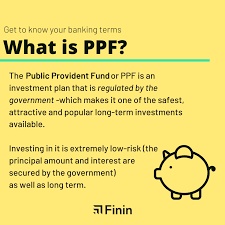Introduction:
In the realm of economics, the Production Possibility Frontier (PPF) is a fundamental concept that plays a pivotal role in analyzing and understanding the trade-offs faced by societies in allocating their limited resources. This graphical representation showcases the maximum output combinations of two goods or services that an economy can what is ppf produce, given its existing level of technology and resources.
The Basics of PPF:
At its core, the Production Possibility Frontier illustrates the concept of scarcity—the fundamental economic problem where resources are finite, and choices must be made. The PPF typically represents two goods on its axes, such as guns and butter, or what is ppf computers and textbooks. The curve itself demonstrates the opportunity cost associated with allocating resources to the production of one good over the other.
The Shape of the Curve:
The shape of the PPF is crucial in understanding the opportunity costs involved in production. Typically, the curve is bowed outward, indicating increasing opportunity costs. This curvature signifies that resources are not perfectly adaptable in the production of different goods and services. As an economy moves along the PPF, shifting resources from one good to another, the opportunity cost increases due to the specialization of resources.
Efficiency and Inefficiency:
Points on the PPF represent efficient allocation of resources, where the economy is operating at its maximum capacity. Inside the curve denotes inefficiency, indicating that resources are not fully utilized. On the other hand, points beyond the curve are unattainable given the current level of resources and technology—a representation of the need for growth or advancements to reach such levels.
Opportunity Cost:
One of the core principles illuminated by the PPF is the concept of opportunity cost. As an economy chooses to produce more of one good over another, the opportunity cost is the value of the next best alternative forgone. This principle underlines the importance of decision-making in economics and the necessity for informed choices.
Dynamic Nature of PPF:
The Production Possibility Frontier is not static and can shift over time due to various factors. Technological advancements, changes in resource availability, and improvements in efficiency can lead to an outward shift of the PPF, signifying an increase in an economy's capacity to produce both goods. Conversely, economic downturns or resource depletions can cause the PPF to contract.
Trade and Comparative Advantage:
The PPF provides a foundation for understanding the principles of trade and comparative advantage. When two countries have different opportunity costs for producing certain goods, they can benefit from trading with each other. Comparative advantage arises when a country can produce a good at a lower opportunity cost than its trading partner. Through specialization and trade, both countries can achieve a higher overall level of consumption than if they were to produce everything domestically.
Government Intervention and PPF:
Governments often play a role in influencing an economy's position on the PPF through policies and regulations. Subsidies, taxes, and other economic interventions can impact resource allocation and production efficiency. Understanding the PPF helps policymakers assess the consequences of their decisions on the overall economic well-being.
Real-world Applications:
The PPF is not merely a theoretical concept; it finds practical applications in various economic analyses. For instance, it can be used to evaluate the impact of a natural disaster on an economy by assessing the damage to resources and infrastructure. Additionally, businesses can use the PPF to optimize production processes and resource allocation to maximize output and minimize costs.
Critiques and Limitations:
While the PPF provides valuable insights, it is not without its criticisms and limitations. The model assumes that resources are fully employed, technology is constant, and there is a fixed set of goods. In reality, these assumptions may not hold true, and the PPF serves as a simplified representation of complex economic systems.
Conclusion:
In conclusion, the Production Possibility Frontier is a foundational concept in economics that facilitates the understanding of resource allocation, opportunity costs, and the dynamic nature of economies. By visually representing the trade-offs faced by societies, the PPF serves as a powerful tool for policymakers, businesses, and individuals alike. Its application extends beyond theoretical frameworks, offering practical insights into decision-making, trade, and the continuous pursuit of economic growth and efficiency. As we navigate the complex landscape of resource scarcity, the PPF remains an indispensable guide for analyzing the choices that shape our economic reality.


No comments yet